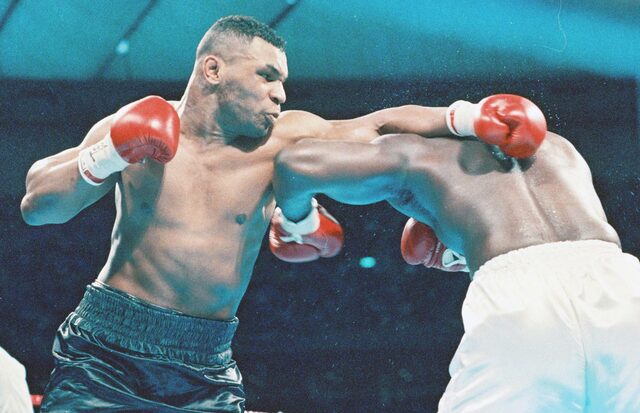
For those who study kendo, “kata” is more than just technique. It embodies the spirituality, technique, and philosophy of Kendo.
This article focuses on the basics of kendo kata and is structured so that beginners to intermediates can learn how to practice kata correctly.
We will cover a wide range of topics, starting with the history of kata, basic techniques, step-by-step teaching methods, and even applications in competitions and judging.
Through this article, I hope you will gain a deeper understanding of Kendo Kata and improve your techniques.
So , let’s take the first step into the world of Kendo Kata.
目次
Introduction: What is Kendo Kata?
Kendo Kata, or “Kata”, is the basic exercise for honing Kendo techniques, and is a series of movements performed to simulate a hypothetical battle with an opponent.
Kata is used to comprehensively train the mind, technique, and body of Kendo, and each movement has a specific meaning.
Historical background of Kendo Kata and its importance
The form of Kendo is derived from ancient martial arts and was developed as a safe way to learn practical combat techniques.
Kata is an important element that conveys not only technique but also the educational aspects of Kendo, including etiquette and spiritual growth.
By learning Kendo Kata, you will improve your technical accuracy, as well as your ability to judge situations and concentration, and gain deep insight into the path of Kendo.
Role and purpose in Kata Kendo
Kendo Kata serves many purposes, but its main purpose is to improve technique and train the mind.
Through kata, swordsmen learn offensive and defensive techniques, and cultivate mental concentration and calmness.
Kata is also a practice for swordsmen to understand and acquire the philosophy and spirit of Kendo while honing their skills.
Kata training is considered an important means for swordsmen to go beyond individual techniques and experience the essence of Kendo.

Basic understanding of Kendo Kata
The fundamental understanding in learning Kendo Kata is to aim for the integration of technical precision and spirituality.
Kata practice requires correct posture and movement, so it is important for beginners to have a firm grasp of this basics.
Basic knowledge of Kendo Kata: terminology and basic postures
There is a wide variety of terminology used in Kendo kata, and each movement and posture has its own name.
Basic postures include “basic standing” and “chudan no kame”, and these postures form the basis of each technique in kendo.
Before you begin practicing Kendo kata, you will need to understand these terms and basic postures, and be able to execute them accurately.
Preparing for Kata practice: Appropriate equipment and mindset
The basic equipment suitable for Kata practice is a dogi, a hakama, and a set of sword tools.
It is especially important to learn how to use a Shinai sword and how to properly wear protective gear.
In addition, as a mental attitude, you are required to “calm your mind” and maintain “respect for the opponent (possible enemy).”
Kata practice is more than simply practicing technique; it requires mental concentration and calmness, so it is extremely important to have the right mindset.

Acquire the basic techniques of Kendo Kata
Acquiring correct techniques is extremely important when practicing Kendo Kata.
This includes maintaining proper posture, effective foot movement, and basic hitting and defensive techniques.
By mastering these techniques, you can solidify the basics of Kendo.
Basics of correct posture and foot movement
Correct posture in Kendo involves keeping your back straight and positioning your feet properly to create a sense of stability.
Leg movements are generally performed using a method called “suriashi.”
With suriashi, you move back and forth while keeping the soles of your feet in close contact with the floor, allowing you to move quietly and quickly, making it easier to maintain your balance.
These basic postures and movements form the basis of the entire Kendo technique.
Basic hitting and defense techniques
The basic techniques of kendo include men-uchi, kote-uchi, and do-uchi.
These hitting methods require accurate hitting and timing. In Kendo, defensive techniques are equally important, and this requires a proper sense of distance and timing.
For defense, “body handling” is used to dodge the opponent’s attacks, and “ukewaza” is used to parry blows using a bamboo sword.
By honing these techniques, you will be able to respond effectively both in Kendo-style exercises and in actual combat.

Kendo Kata: Step-by-step instruction
Kendo Kata training generally progresses in stages, with instruction tailored to each level.
In the process of evolving your technique from beginner to intermediate to advanced, the shapes that correspond to each stage play an important role.
Katas for Beginners: Why start with basic Katas?
The basic kata that beginners should learn in kendo includes important techniques that form the foundation of kendo as a whole.
By learning the basic kata, you can learn the basic postures, movements, strikes, and foot movements of kendo.
Establishing accurate techniques at this early stage will ensure correct development in future learning and prevent bad habits.
Furthermore, since the basic kata can be considered an introduction to understanding the philosophy and spirituality of kendo, it also contributes to spiritual growth.
Intermediate form: Improve technical precision
For intermediate players, kendo kata requires more advanced technique and precision in small movements.
At this stage, in addition to learning basic techniques, you will also learn the flow and interlocking of each movement, as well as applications that are close to actual combat.
In Kata practice for intermediate players, the goal is to significantly improve reaction speed and technical accuracy in actual combat by seeking greater precision and speed in each stroke.
This will also deepen your understanding of self-expression and tactics in Kendo.

Practical application and practice methods of Kendo Kata
In order to effectively practice Kendo kata and aim for practical application, it is important to practice alone and with an opponent.
Through these practice methods, you will be able to systematically understand kata techniques and improve your ability to apply them in actual combat.
Kata exercises for solo practice
Solo kata exercises are a great opportunity to hone your technique and improve the accuracy of your movements.
In this practice, each kata movement is performed slowly and precisely, gaining a deep understanding of the intent of each technique.
Specifically, while maintaining the basic posture of Kendo, we will concentrate on practicing techniques such as striking techniques, foot movements, and body rotation.
During this process, it is also effective to check your posture and movements using a mirror.
Practicing alone allows you to focus on individual techniques and also develops the ability to self-correct.
Application of Kata in practice with partner
Practicing with a partner allows you to test your kata techniques in a more practical environment.
In this practice, you will aim to master timing and distance by applying techniques according to your opponent’s movements.
Specifically, participants practice appropriate defensive techniques and counters to their opponent’s attacks while performing mutually defined movements.
This allows students to experience how the techniques learned in Kata can be applied to real-world situations and improve their reaction speed and ability to respond.
Practicing with your opponent is essential to further deepen your kata studies and prepare you for the actual competition.

For Kendo Kata matches and judging
Matches and judging are important steps in Kendo kata.
At these events, not only the technique but also the spirituality and understanding of Kendo are evaluated.
By preparing properly, you can increase your chances of receiving a high evaluation in judging and competitions.
Points evaluated in the shape examination
When judging kendo kata, emphasis is placed on technical accuracy as well as the fluidity and continuity of the performance. The judges will evaluate the following points:
- Technique Precision – Precise execution of each technique and flow of form.
- Beauty of posture and movement – Correct posture and smooth movement.
- Spirit – Mental concentration and enthusiasm when performing a skill.
- Rhythm and Timing – The natural flow of movements and correct timing.
- Comprehension – Understanding the meaning and purpose of each part of a shape.
These elements demonstrate not only technical skill, but also spiritual maturity in Kendo.
What is the spiritual element in Kendo Kata?
In Kendo Kata, it is not only the technical aspect but also the inner growth of the swordsman that is extremely important. Spiritual elements include:
- Concentration – Concentration and complete investment in each movement.
- Calmness – The ability to remain calm and make good decisions under pressure.
- Practicing Kendo Ethics – Performing Kata with the correct attitude and respect.
- Self-expression – Expressing one’s own Kendo views through form.
These spiritual elements are embodied through the performance of Kendo forms, and the overall qualities of a swordsman are judged.
The form of kendo goes beyond mere physical techniques and is also a way to hone the inner self of a swordsman.

Summary and next steps
The knowledge and skills gained through the study of kendo forms influence the practice of kendo as a whole.
Learn how to master the basics and incorporate them into your daily practice, as well as recommended resources for further learning.
How to incorporate the basics of Kendo Kata into your daily practice
Incorporating the basic techniques of Kendo Kata into your daily practice will lead to continuous improvement of your techniques. Specifically, the following methods are valid:
- Practice the kata regularly – Incorporate the kata several times in each practice to solidify the technique.
- Focus on the precision of movements – Pursue precision by carefully performing each movement in the form.
- Video analysis – record a video of yourself and watch it later to find improvements in your technique.
- Feedback with teachers and seniors – Seek feedback regularly and address areas for improvement.
By repeating these exercises, you will deepen your understanding of the shapes and the techniques will naturally become ingrained in your body.
Recommended resources and learning tools to deepen your knowledge of Kendo
In order to develop Kendo techniques and understanding, appropriate learning resources and equipment are required. Recommended resources and tools include:
- Specialized books – Read specialized books written about Kendo forms and techniques to deepen your theoretical knowledge.
- Kendo tools set – Use high quality sword tools to practice safely and effectively.
- Online Courses and Videos – Watch teaching materials and sample techniques from renowned Kendo masters.
- Seminars and Workshops – Attend live seminars and workshops and receive direct instruction.
By utilizing these resources and tools, you can expect to not only improve your Kendo skills, but also grow mentally.
Actively practicing Kendo Kata and constantly learning are the keys to progress in the Way of Kendo.




